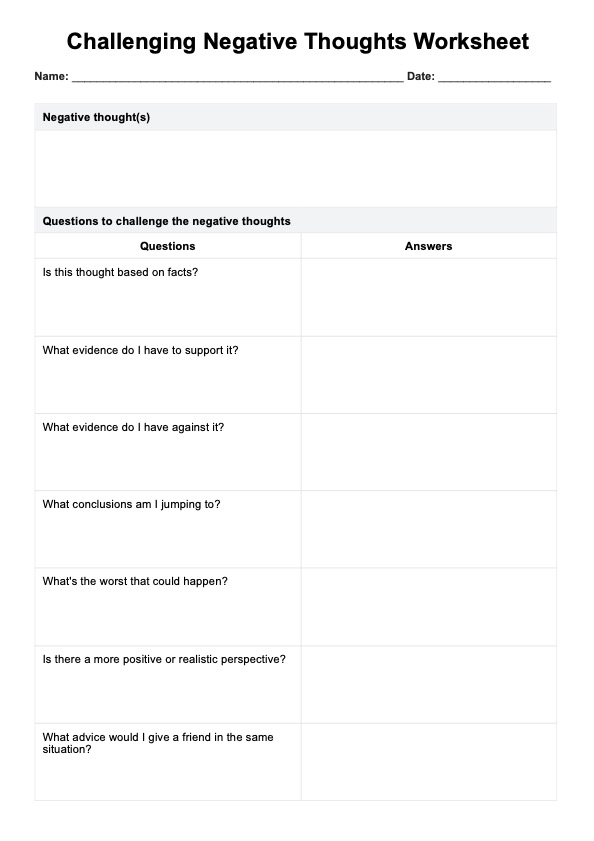Challenging negative thoughts is a cognitive behavioral therapy (CBT) technique that helps individuals identify and question unhelpful thinking patterns. It involves examining whether a thought is factual, balanced, or distorted, and replacing it with a more realistic alternative. This process reduces emotional distress and promotes healthier perspectives that support mental well-being.

Challenging Negative Thoughts Worksheet
Help your clients reframe unhelpful thought patterns with our free Challenging Negative Thoughts Worksheet, designed to promote self-awareness and resilience.
Challenging Negative Thoughts Worksheet Template
Commonly asked questions
You can help clients deal with negative thoughts by teaching them to recognize, record, and reframe them using CBT worksheets or guided reflection. Encourage them to look for evidence against the thought, consider alternative explanations, and focus on the present moment. Over time, this approach helps clients reduce rumination and respond to challenges more calmly and effectively.
Letting go of negative thoughts is essential for emotional balance, mental clarity, and long-term resilience. Holding on to unhelpful thoughts can intensify stress, anxiety, or self-doubt, leading to ongoing emotional strain. When clients learn to release these patterns, they create space for positive thinking, improved well-being, and healthier coping strategies.
EHR and practice management software
Get started for free
*No credit card required
Free
$0/usd
Unlimited clients
Telehealth
1GB of storage
Client portal text
Automated billing and online payments











